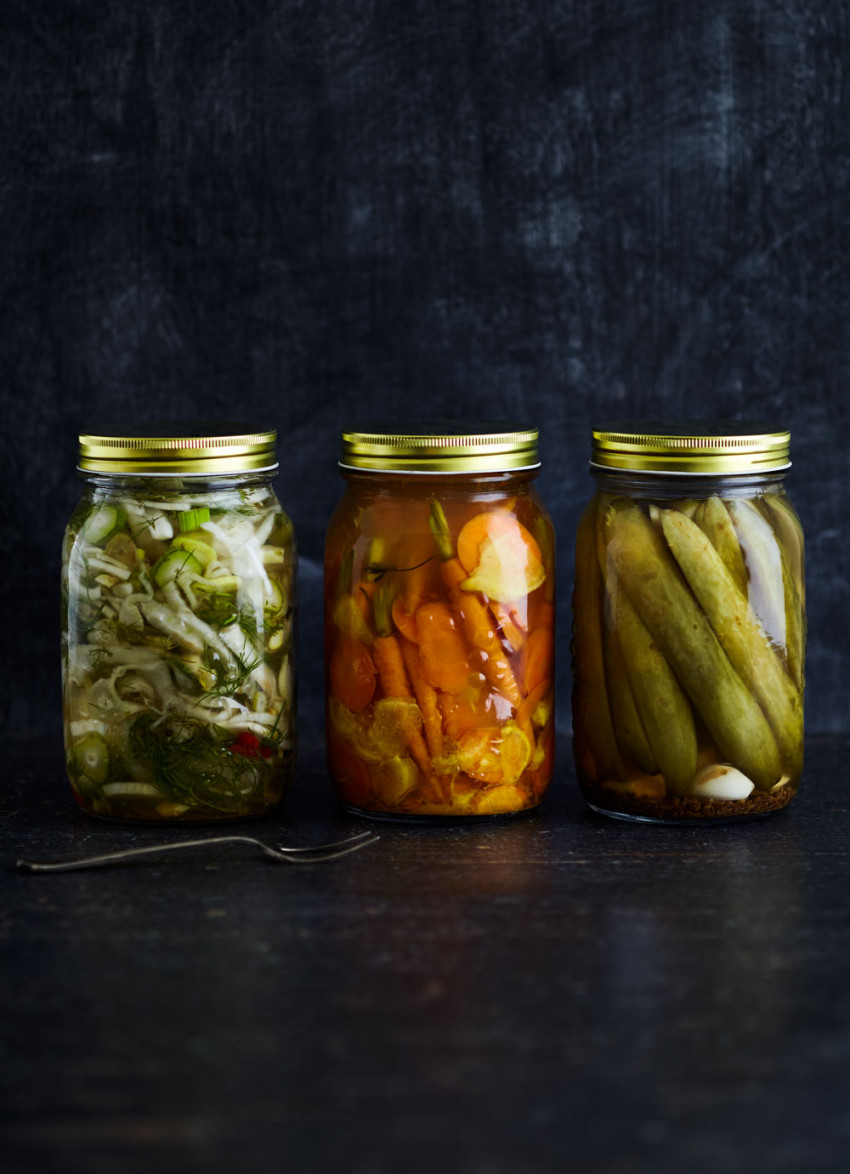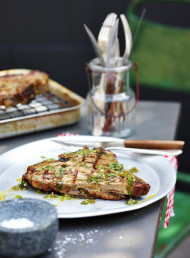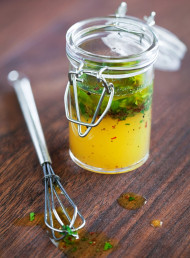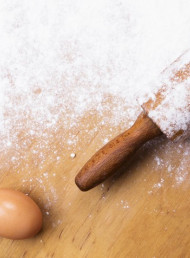Pickling Tips and Tricks
Photography by Manja Wachsmuth.

The pickle craze is here to stay. Here's all you need to know to get you on your way to preserving perfection.
Despite their seemingly trendy renaissance of late, pickles really are a timeless culinary treasure. Whether they’re tucked into a sandwich, dotted over a salad, embellishing a cheeseboard, folded into buttery bread or simply eaten straight from the jar – they provide flavour, depth and life. Pickling is also a fantastic way of using up any old vegetables that may be lolling around the vegetable bins or gracing the back of the pantry. Here are some tips and tricks to make sure you get the basics right.
Sterilising jars
Sterilising jars is a vital part of the pickling process and can be done very easily. Simply wash the jars in hot soapy water, rinse well, then place in a cold oven. Heat the oven to 100°C – once this heat has been reached, leave jars inside the oven until they have completely dried. Remove carefully. To sterilise lids, place them in a large pot of boiling water for 5–7 minutes. Remove and wipe with a clean paper towel, ensuring they are completely dry.
Packing jars
Once jars are sterilised and cooled, vegetables can be carefully packed in. The aim is to get as many vegetables in the jars as possible – without damaging them. You should be able to fill the jars with liquid to just below the rim, ensuring the vegetables are fully submerged in the pickling liquid – if they poke out of the liquid, they can quickly become discoloured and deteriorate. Ridding jars of bubbles before sealing is important too, in order to minimise risk of micro-organism growth. Tapping jars on the kitchen bench will get rid of any bubbles that may have formed.
Storage
A key thing to remember before sealing jars is to wipe the rims with a paper towel. If you want to store your pickles for an extended period (up to 12 months), heat-processing the jars is a good option (see below). Once opened, all pickles should be kept in the refrigerator.
Heat processing
Once your pickles are sealed in their jars you can heat process them. Heat processing helps to prevent bacteria growing, by using heat and pressure. To heat process your pickles, sit the jars in a large pot of warm water so they are at least three-quarters submerged. Bring the water to boiling point and let jars sit for five minutes. Remove carefully after five minutes. The lids should be concave. If you would rather not heat process your pickles, keep the jars in the fridge and use them within six weeks.
Zero-waste pickling
If you have any vegetables on the brink of being too old, or if you’re going away for a period of time and clearing out the fridge, pickling is a wonderful idea. Limp carrots rolling around the fridge? Pickle them and enjoy with cheese toasties later on.
latest issue:
Issue #120
As the days become shorter, and the nights cooler, the latest issue is perfectly timed to deliver delicious autumn dishes. From recipes using fresh seasonal produce such as feijoas and apples, to spectacular soothing soups and super-quick after-work meals in our Food Fast section, we’ve got you covered. With Easter on the horizon, we feature recipes that will see you through breakfast, lunch and dinner over a leisurely weekend holiday, and whip up chocolatey baking treats sure to please. We round up delicious dinners for two and showcase a hot new Korean cookbook before heading south to Dunedin to check out all that’s new in food and dining.The latest issue of dish is on sale NOW at all good bookstores and supermarkets – don’t miss it!





